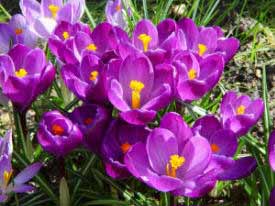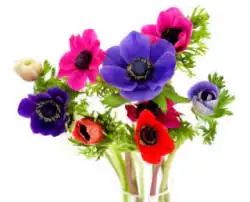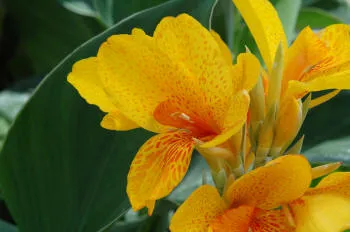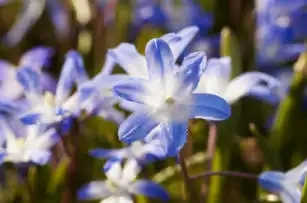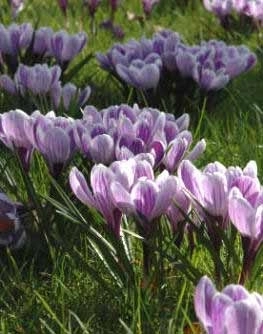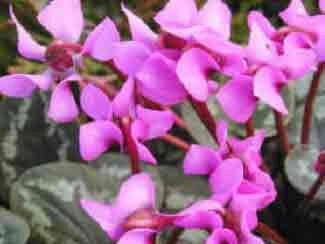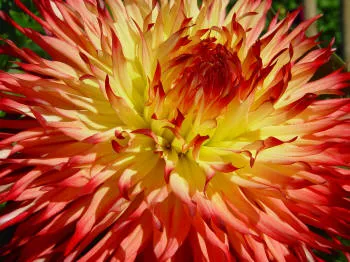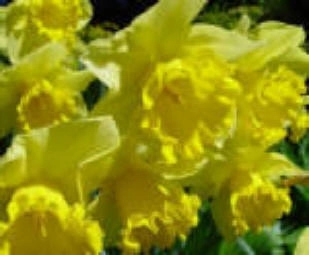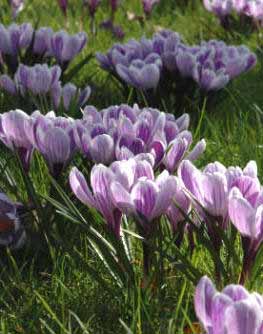
naturalised crocus bulbs
Planting Crocus - The spring flowering Crocus, are
normally sold in garden centres during late summer through to autumn
and this is the time when to plant crocus bulbs. Crocus bulbs
should be planted as soon as possible. However, I have been forced to
keep crocus right through to February before planting with seemingly
little adverse affects - either at flowering time of the following year.
However, it is far better to plant your Crocus with plenty of time to
get settled in for the winter.
Crocus should be planted at around three inches deep, and care should
be taken not to break the new shoot that may ne emerging even as you
plant them. If more than a centimetre long, then trickle in some
sandy soil - or even sand -
around the corm to prevent damage to that shoot. It already holds the
flower bud for the spring flowering period.
Planting
Crocus in Containers - For the best display results, Crocus should be
planted in groups of three or four bulbs around 2in 5cm apart. These
will then emerge as small clumps of flowers in the spring, giving the
impression that they are 'mature' clumps of bulbs. Far better that
planting as single bulbs. The same number can be planted - given the
size of the container - but with a far better show of flowers in the
spring if planted in groups. Planting depth is the same as for garden
planting.
Planting Crocus in The Lawn for Naturalising -
Crocus are ideal bulbs or corms for naturalising - either in lawns or
around the base of trees and large shrubs. In lawns, it is often
suggested that you cut out a slice of turf and simply position the
bulbs then firm the turf back down. In my own experience, it is far
better - with less damage and a better show the following spring - if
a little bit more care is taken and the bulbs planted individually in
their flowering situation. In the case of long term naturalising, the
bulbs can be planted singly. They will bulk up after a year or so with
seedlings popping up everywhere. If a more immediate effect is
desired, then plant in close groups of four or so bulbs/corms. these
can be lifted and divided after a few years.
After-Care of Crocus Once They have Flowered. - The
biggest mistake - as with any bulb - is to cut the foliage down before
it has died down naturally. Allowing the foliage to keep growing after
the bulbs have flowered, is essential to ensure flowers for the next
year. It is during this time of foliage growth, that the bulb builds up
food reserves to ensure a flower bud is formed for the next year.
If bulbs are naturalised in lawns, then plant them in individual
drifts that can be left un-mown for the first three or four mowing cuts
in the spring. So, the grass will look a little untidy. It is either
that, or waste your time and be disappointed the following year when
there are fewer flowers to be seen.
Crocus Not Flowering - In 90% of cases, this is due
to the fact that the foliage has not been allowed to die down naturally.
There are other reasons why Crocus do not flower listed below in
'Problems'.
